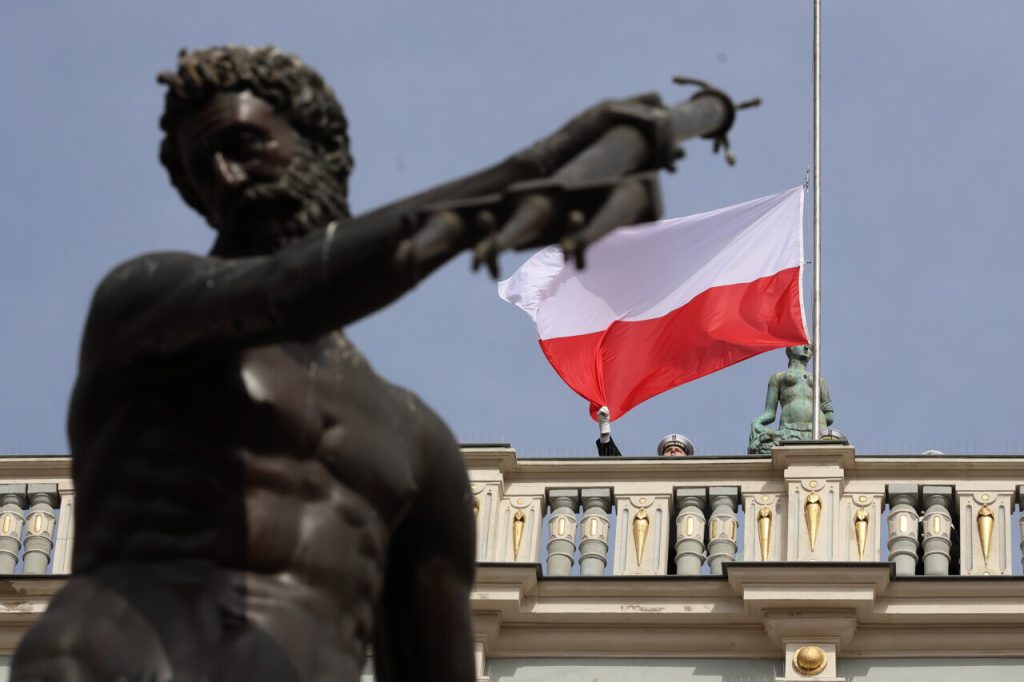Gdansk returned to Poland 79 years ago
On Thursday, 28 March, the white and red flag was ceremoniously raised at the top of Artus Court. According to the city’s portal Gdansk.pl, part of the event to commemorate the 79th anniversary of Gdansk’s return to Poland was also a march of military units and a parade drill performed by the Representative Company of the Polish Navy.
The most important date for the Polish city of Gdansk is 28 March 1945 – the day the red-and-white flag was flown at Artus Court by Polish tank drivers: Second Lieutenant Bronisław Wilczewski and Ensign Zbigniew Michel.
Initially, the flag was intended to be hung from the tower of the Main Town Hall, but when the soldiers reached Długi Targ, they realised that it was damaged. Two young Poles, aged 19, climbed up the façade of a neighbouring building and reached the flagpole, on which the Nazi flag with the swastika was still flying. They tore it down to place the white and red flag in the same place. The artillery shelling, which was still going on, almost thwarted this intention too, because during the improvised ceremony, the back of the building was hit by a shell and flames appeared on the roof,” reports Gdansk.pl.
The date of the Soviet capture of the city is believed to be 30 March 1945. In fact, however, the Germans were still defending themselves in Płoni Wielka on the night of 6-7 April.
As we read, the Soviets treated Gdansk without understanding the historical nuances, its importance for Poland. For them it was the first major German city, which in addition had been turned into a ‘fortress’ on Hitler’s orders. It was to be conquered and to teach the enemy population a lesson for everything the Third Reich’s troops had done in the USSR. Germany’s second major city, Königsberg (Königsberg), also turned into a fortress, became the scene of fighting on 6 April, when Danzig was already virtually captured.
The inner city of Danzig was 90 per cent destroyed, more than six thousand houses ceased to exist, about 1,300 buildings were badly damaged. According to incomplete data from 15 July 1945, 19,665 buildings were destroyed in the whole of Danzig (of which residential – 15,600, economic – 3,160, industrial – 535). The centres of Wrzeszcz, Nowy Port, Stogi were destroyed. Of the 17 historic churches, 14 were severely damaged. Soviet fires consumed historic buildings, including the Main City Hall, the Armoury, the Great Mill and the Great Crane. 20 out of 36 bridges and viaducts were destroyed, including the tramway traction.
The return of Gdansk to Poland was not a simple process. There was an almost complete exchange of population from German to Polish – but the new inhabitants had the feeling that they were living in a post-German city. The complicated history was replaced by communist propaganda about “eternal Polishness”. It was only the political changes, which began with the strike at the Gdansk shipyard in August 1980, that initiated the process of building a new identity for the inhabitants,” reads the website.
Photos: Piotr Wittman/www.gdansk.pl, Grzegorz Mehring/www.gdansk.pl
Source: PortalMorski.pl; Gdansk.pl




